My experiences with Indian Pangolins have been with the ones that are rescued from illegal wildlife trade at the point where they have been poached from the wild and kept captive in jute sacks for days on end. The pangolin is often kept tied inside for many days without food and water causing malnourishment and dehydration and subsequently, serious health problems. Indian pangolins, when starved and manhandled during transportation by poachers, predominantly undergo poaching stress. When a veterinarian receives them for a general checkup and medical examination after poaching, they are already in poor health and body condition. Regardless of their willingness to drink ample water, running around and looking active and alert, diagnostic tests reveal altered blood and serum parameters. It is crucial to immediately run complete blood and serum profiles of every pangolin that is found with a history of poaching. I recommend using the following protocol for examination and stabilization of rescued Indian pangolins.
General physical checkup and medical examination of Indian Pangolins
1. Physical examination (before sedation):
- Check for the presence of external wounds.
- Check if the gait is normal.
- Check rectal temperature.
- Check weight at the time of arrival.
- Check for foul smell or discharge if present.
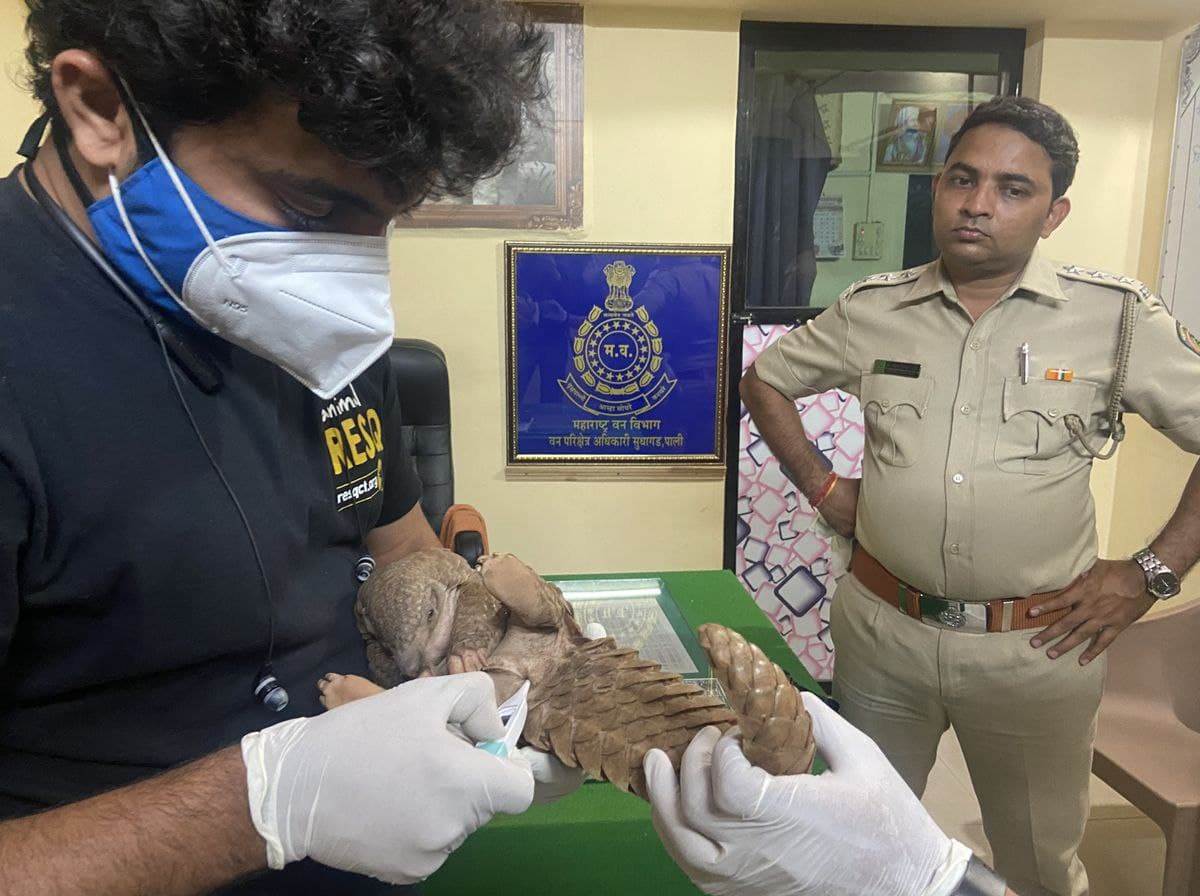
2. Physical examination (after sedation):
a) Sedation: This part of physical examination is possible only after sedation. Usually whenever we get pangolins for treatment, we sedate them first because they go under tremendous stress if handled when they are conscious and also, it's not possible to do a full body checkup without sedation because they coil when handled. One should never uncoil a coiled pangolin forcefully to avoid musculoskeletal injuries. I prefer using gaseous anaesthesia eg. isoflurane for sedation and maintenance.
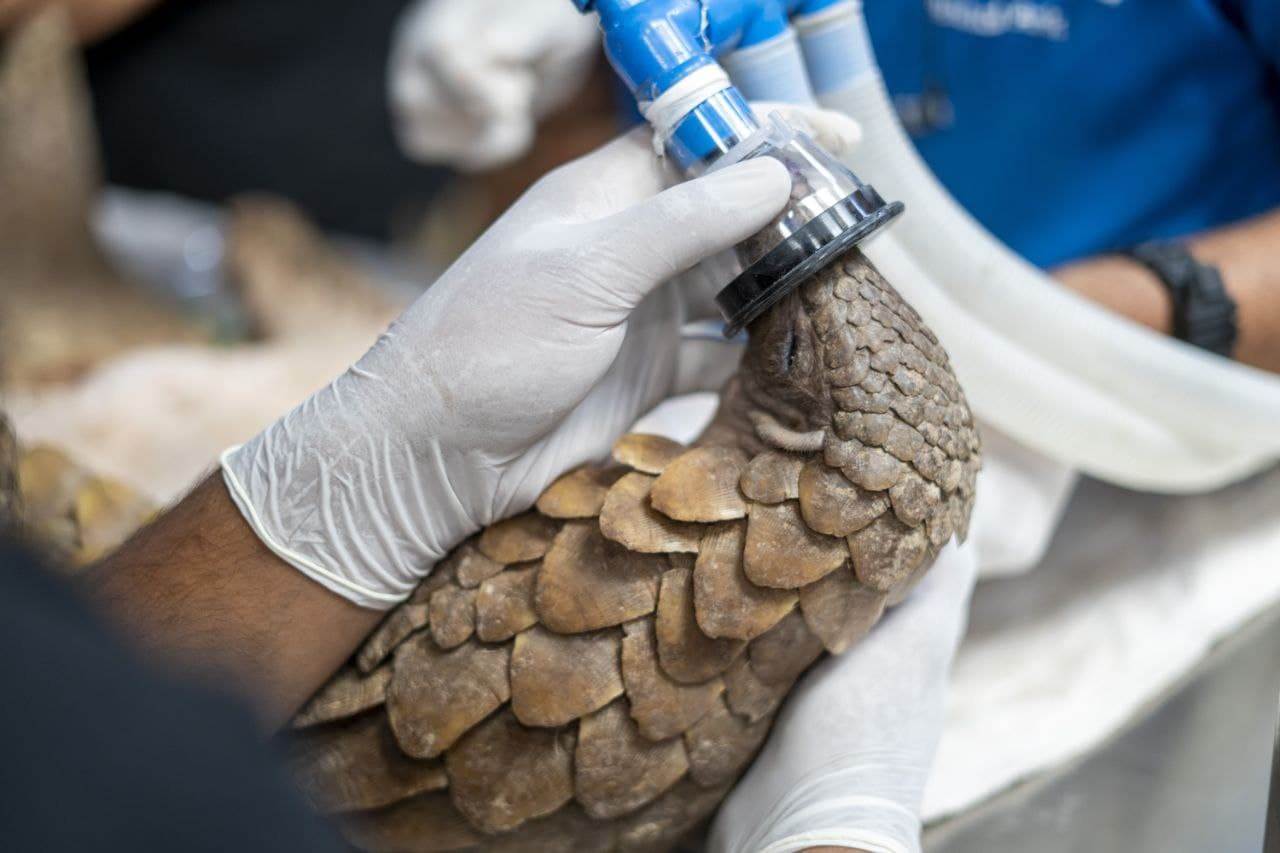
b) Sample collection: Once they are sedated, veterinarians can collect blood samples from the coccygeal vein for laboratory analysis. Eg. CBC, LFT, KFT, Serum glucose etc.
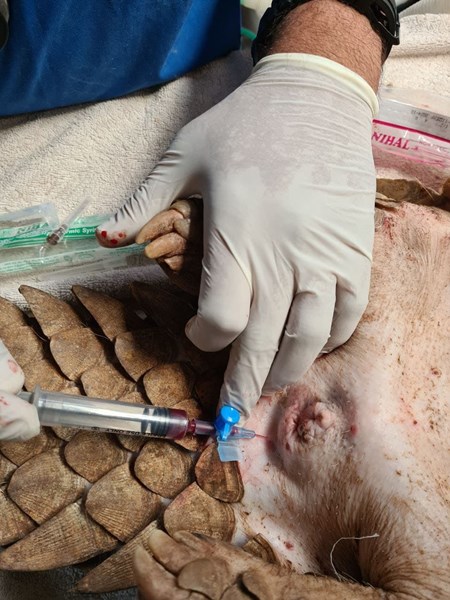
c) Radiography: When pangolins are sedated it is easy to do chest and abdomen auscultation and radiography. Radiography of chest is very important because pangolins are very susceptible to get respiratory infections eg. pneumonia when they go under stress. Abdominal radiographs will help you understanding gastrointestinal problems eg. constipation etc. which is very common due to dehydration and lack of exercise.
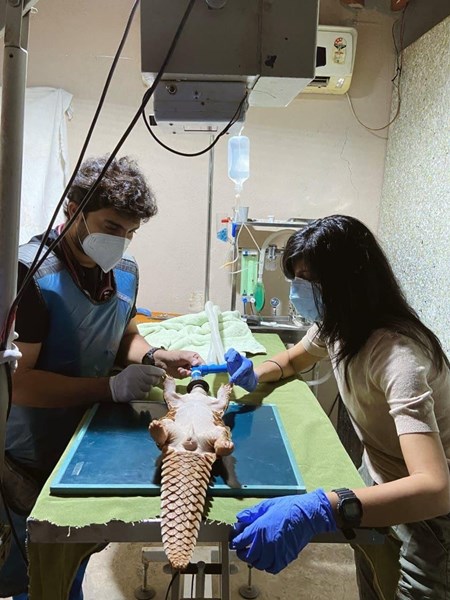
d) Fluid therapy: Veterinarians can check dehydration status and fluid therapy is given by putting an intravenous catheter in the coccygeal vein. The amount of fluid required is calculated based on the level of dehydration present at that time.
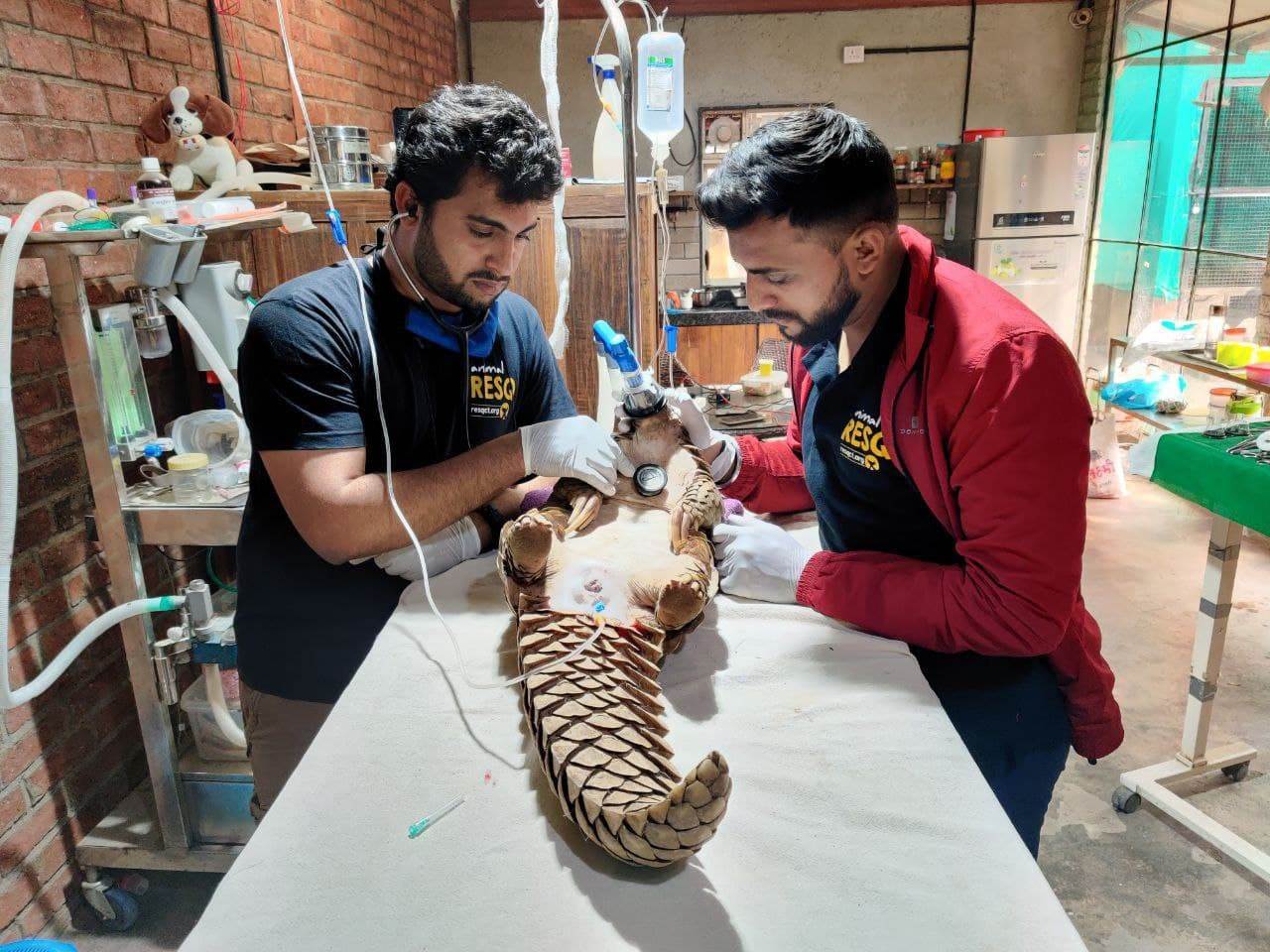
e) Tube feeding: Pangolins which have been kept in captivity by poachers generally show inappetence and weakness. So, for the first couple of days until they start eating by themselves you must give them liquid food formula with the help of tube feeding. This procedure is performed by veterinarians in which a feeding tube is placed in the stomach through the mouth of the pangolin under general anesthesia. You must be careful that pangolins do not get aspiration pneumonia because of improper placement of the feeding tube.
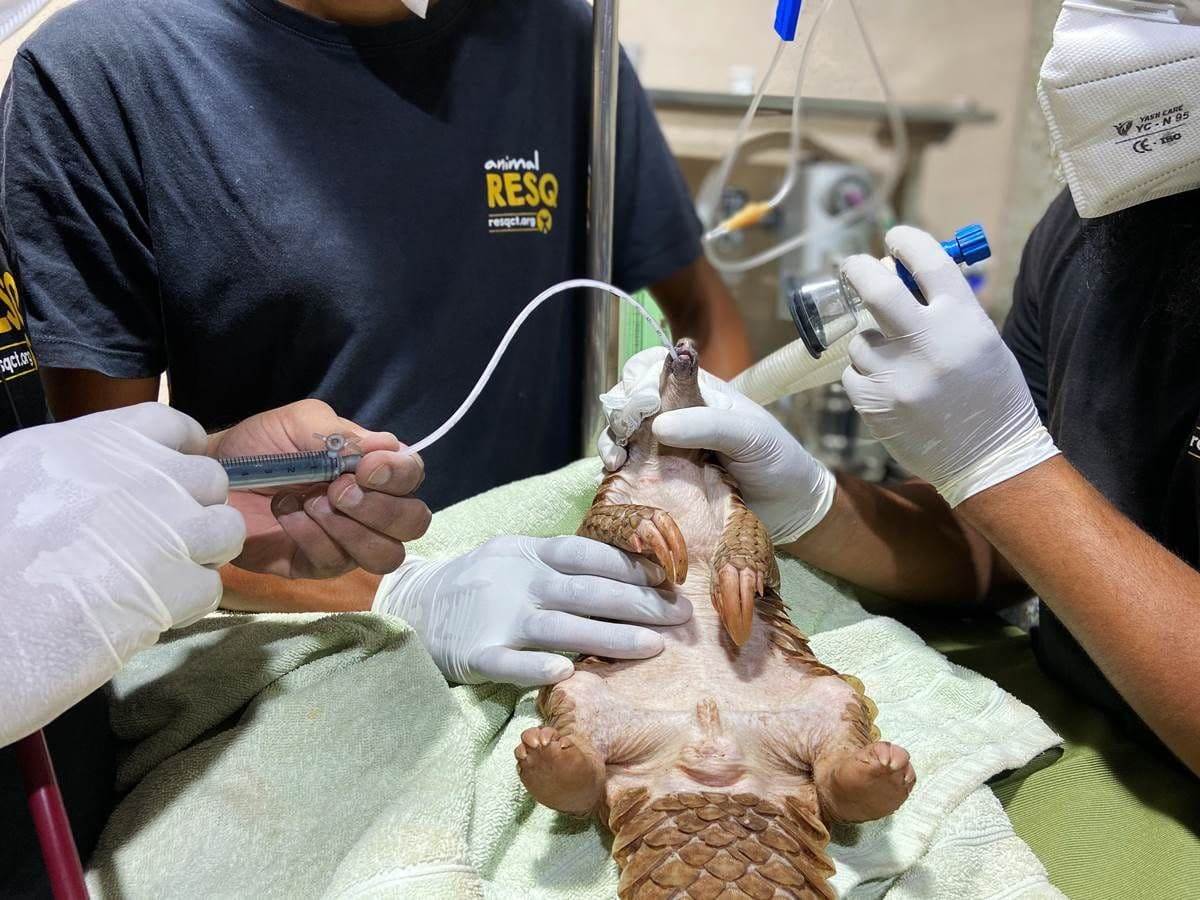
Once an Indian pangolin starts self-feeding and showing an increase in weight and appetite gradually, blood tests should be done again to confirm if they are healthy, and their parameters are within the normal ranges. When pangolins are able to feed on ants and termites, we reduce the food formula gradually and monitor them on a daily basis until we deem them fit for release in their natural habitat.